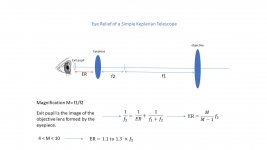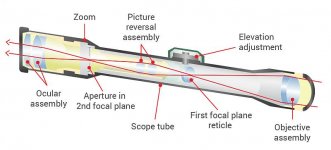Back to reality...
Maybe other creatures on other planets are shaped like balls and roll around their own environment in different gravity.
It seems we may be having a conversation with one now, in a manner of speaking. I actually didn't expect to have to get into this. I was merely puzzled by Williamson's remark because words like "designed" and "made" are generally used only by evolution deniers, but with their typical beliefs there would be no remaining "mystery" to speak of. So I have no idea where Williamson puts himself, but I can address Omid.
Our eyes; designed or evolved? This is a hell of a question. If someone had asked me this question a few years ago, I would readily answer that they evolved over many million years by the process of
natural selection. If someone asks me this question now, I would say that human eyes
can never ever be designed by an evolutionary optimization process. Gradual improvement (even if guided by a gradient-descent algorithm that can identify a direction vector for improvement)
can't lead to an stereoscopic, auto-focus, night-day vision capable, liquid-filled, deformable lens, image-stabilized (yes, the human visual system is image-stabilized like the Zeiss 20X60), color-sensitive optical system mounted in-front (not behind or to the sides) of the head of a bi-pedal creature.
Absolutely all of this was argued to full completion long ago, but here we go, as briefly as possible... I really can't imagine why anyone would want to ask
you this question at all, since it obviously doesn't fall within your expertise -- and it's not clear what real scientific field does, not even optics it seems. As to biology, you're in no position whatever to make claims about what evolution can "never ever" have led to. Yes, the eye is intricate and useful yet it's also rather weird, not truly "optimized" at all, and could have been better in any number of ways. This is typical; such features develop in a purely contingent way and at times even for different purposes, as with feathers and wings. But you're just engaging in idle café chatter about irrelevant abstractions. Evolution is not an "optimization" process, an algorithm, a heuristic; it's not actually
performed by anything, and doesn't have goals, but just happens. If
you can't see how it could have produced eyes, you simply need to learn more about evolution, and about eyes.
PS1. I learned optimization theory from the book by the prominent British mathematician Roger Fltecher some 25 years ago. Genetic algorithm (and the whole host of similar methods developed over the past several decades) are a bunch of ad-hoc non-scientific methods. See attached PDF paper which exposes the fallacy of the so-called "nature-inspired" optimization methods.
You seem to be suffering from a ridiculous misunderstanding here. The fact that evolution is used as a metaphorical inspiration for algorithms (in the arcane field of "metaheuristics") doesn't mean that it is one itself; the fact that such "evolutionary" optimization methods may not work well doesn't mean that biological evolution doesn't work. You're confusing theoretical entities with real ones, metaphor with scientific fact -- essentially, living on another planet.
PS2. Evolution by natural selection is a non-scientific theory as well. This is because you can not design an experiment (or hope for discovering some evidence) which can possibly prove evolution wrong. It is also a circular argument: the fittest are those who survive, and those who survive are deemed fittest. Evolutionary theory is like economy, psychology and probability theory. It is close to a being a science but not quite there yet.
Evolution is actually the best established theory in modern science. It has a staggering range of supporting evidence in a variety of fields ranging from paleontology to microbiology. Ignorance of the actual content of all those fields doesn't justify a claim to the contrary. All sorts of this evidence could have turned out differently in ways that would have been awkward for evolution to explain, but didn't. (It's actually hard to "prove" any theory "wrong" because there are always explanatory maneuvers to resort to; but evolution is no different in this respect from others.) All these foolish statements have been widely and repeatedly rebutted in detail, so I'll ignore the unfortunate business of Huxley's "fittest" and stop here.
Binastro is right, there's much that we don't yet know. But these are the kinds of claims that students are supposed to learn the fallacy of in college if not high school, that make one wonder what sort of person one could be talking to... of course it's also odd to hear someone make Leica out to be fools for not licensing his optical patent, and then find that he actually doesn't understand depth of field. "New Horizons", indeed. The question I had at my first glance has been answered; this conversation can only be described as risible, ideally said in one's best Michael Palin voice.








